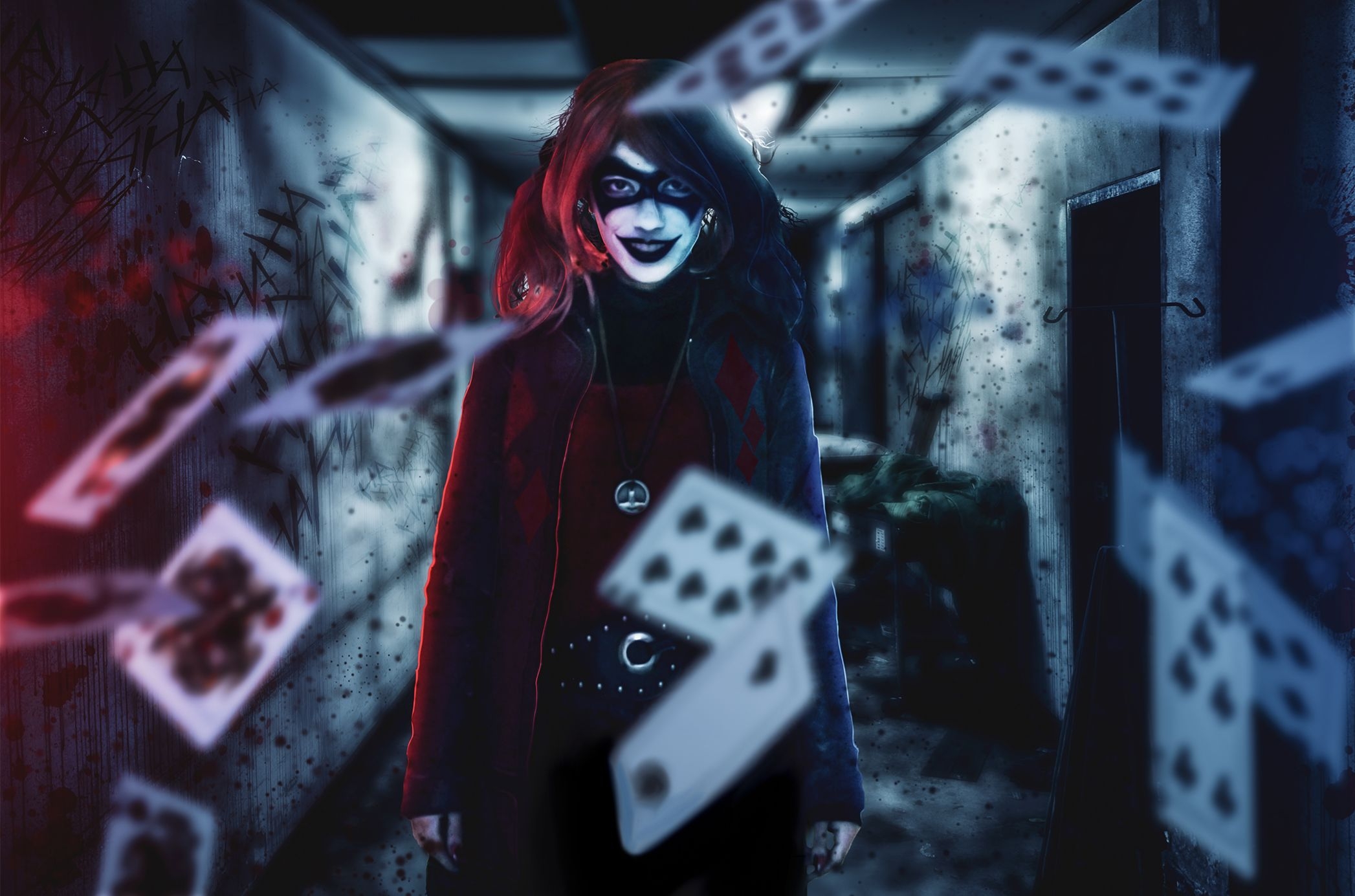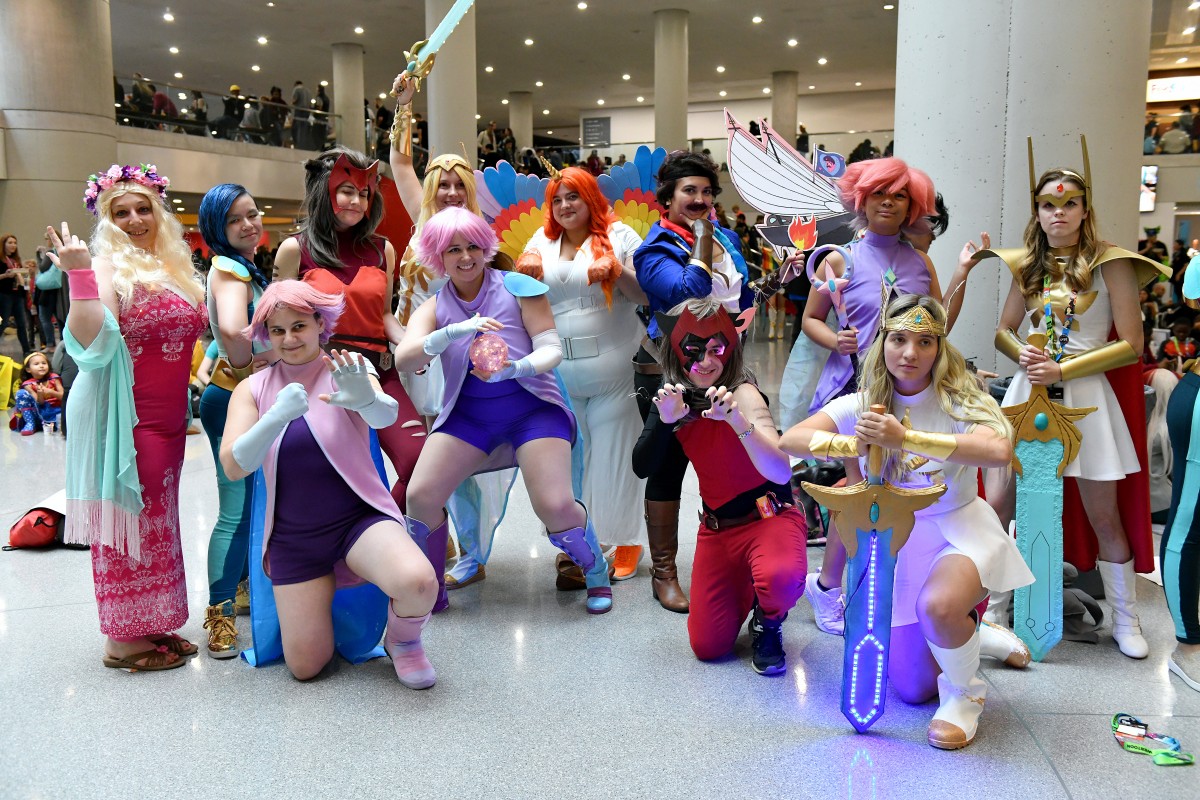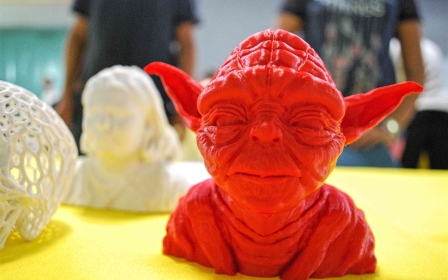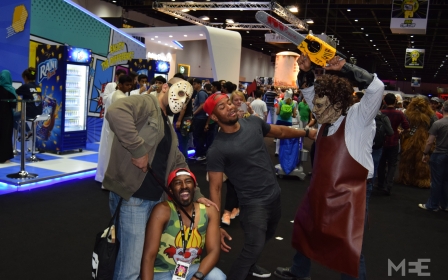Batman, wigs and make-up kits: How cosplay is gaining ground in Iran

On a rooftop in central Tehran, Sarah Shahabadi and two other friends are recreating scenes from a popular superhero movie.
It's a hot summer's day, but 24-year-old Shahabadi is dressed in leather trousers, a leather jacket and a purple wig, so she can pose as "Hit Girl”, a fictional character from US comic series Kick-Ass, while another friend takes photos.
What she and her friends are doing is known as cosplay - a form of pop culture that originated in Japan, the name a combination of the words "costume" and "play". Cosplayers dress as their favourite heroes from comic books, animations, or sci-fi movies. Many of them then also live-stream videos or post photos of themselves on social media platforms to offer a glimpse into their fantasy universe.
"I love pretending to be the character, bringing her to life, even if it's just for a few hours. I think it's this element that makes every cosplayer fall in love with this performance art," says Shahabadi, who is studying theatre at university.
New MEE newsletter: Jerusalem Dispatch
Sign up to get the latest insights and analysis on Israel-Palestine, alongside Turkey Unpacked and other MEE newsletters
"My only problem - on that day - [was that] I had to wear a leather outfit in the middle of the summer," she adds, smiling.
The practice sessions paid off - less than a year later, as the world went into coronavirus lockdown, movie review aggregator Rotten Tomatoes decided to mark the 10th anniversary of the original Kick-Ass movie release. The website called on cosplay Instagrammers to take part in a competition for best costume and performance.
The photos of Shahabadi and her friends were among the handful of performances chosen and shared on the Rotten Tomatoes' Instagram page, which at the time had more than 1.2 million followers.
"This was among very few instances that a reputable foreign media posted images of cosplayers in Iran," she says.
Sarah from Wonderland
Shahabadi is just one example of the growing number of Iranians, especially women, who are joining an ever-increasing community of cosplayers.
"Today there are roughly 100-150 cosplayers in Iran at different levels, in terms of quality of their performance. Most of them are women," she tells Middle East Eye.
But it's not always easy for women cosplayers in Iran, where a strict dress code, in place since the 1979 Islamic Revolution, means they have to circumvent the moral police.
"As a female cosplayer in Iran, I have to deal with a lot of restrictions in my choice of characters," she says. "I always have to be careful and adapt modest costumes in a subculture where women tend to be scantily clad."
On Instagram, Shahabadi is known as Sarah_from_Wonderland, and after nearly four years of recreating different characters with modest costumes, and working with other recognised figures in Iran, she is now among the most well known faces in the country's cosplay community.
"In the early days, people didn't have a positive impression about cosplaying, and some even made nasty comments about our work. I tried very hard to explain what we do, for example by writing explanatory notes under our Instagram posts as well as responding to the comments made on other social media platforms. That wasn't easy."
'I mostly receive calls and orders to prepare costumes and create characters for male performers because that's what the organisers of those events normally prefer'
- Sarah Shahabadi, Iranian cosplayer
As part of their efforts to raise awareness of this art form, in 2018, she and a handful of other fans organised the first cosplay workshop in Iran exclusively for women.
"You might not see a lot of women cosplayers being invited to events, festivals and film screenings here," Shahabadi says. "For example, as a cosplay director and project designer, I mostly receive calls and orders to prepare costumes and create characters for male performers because that's what the organisers of those events normally prefer."
But she's not letting this get in her way. "I believe these limitations have made me more innovative and determined to overcome the challenges," says Shahabadi, who in 2019 designed cosplay characters and costumes based on The Last Fiction, an Iranian animation about Persian mythology which was one of the 32 nominated animations at last year's Oscars.
After gathering the necessary permits, and making announcements on social media platforms, more than 100 people registered to take part in the one-day workshop in Tehran, although they could only accommodate a fifth in their space. The workshop focused on theatrical makeup, costume design and photography, and attendees also had the chance to try on costumes of popular characters and have their photos taken.
Putting passion to work
One of the problems many cosplayers in Iran face is sourcing all the elements of their chosen costume. Although there are a handful of shops in Tehran selling imported action figures, posters, masks, and accessories of popular comic book characters, these aren't cheap. Accessories like wigs, make-up kits, contact lenses, sold via Instagram, are no less expensive.
The more established Iranian cosplayers usually opt for handmade options, using readily available materials such as plastic, foam and leather. Some of the more professional cosplayers are forced to make their own costumes, and some even create and sell bespoke pieces for an income that goes towards supporting their pricey passion.
Others have opted for modern methods to help speed the process. Avid cosplayer Ashkan Nazari began a few years ago to make action figures, helmets, armour, and other accessories from popular movie characters with the help of computers and 3D printers.
Nazari's shabby and dusty workshop inside a vast garden full of tall trees in Shahriar County is a one-hour drive from Tehran. Hung on the walls are dozens of photos of Nazari in costume.
'When I was a child, I always dreamed of having a full-face Batman helmet to wear. Now that dream has come true'
- Ashkan Nazari, Iranian cosplayer producer
Born in 1993, Nazari gave up studying hardware engineering at university and had already tried a few jobs before finding the career he loved.
He studied 3D printing online through trial and error. Now he claims his creations not only rival similar foreign products in terms of quality, but are also much cheaper for cosplayers in Iran to buy.
Nazari then posts creative and fun reviews about his products and cosplaying in general on his YouTube and Instagram accounts, and his numbers of followers are growing.
"I prefer to invest my time and energy in work that I find interesting. When I was a child, I always dreamed of having a full-face Batman helmet to wear.
"Now that dream has come true. Today I make that helmet myself. I'll never quit this job."
The Covid-19 outbreak has had little impact on the work of Nazari and his new team member, Pouriya Jafarnia. Demand has been overwhelming as more and more people, from age eight upwards, order new items every day.
"Over recent months, I barely found the time to watch new movies or play games, or meet my friends. Our goal is to expand our work and produce quality products without increasing prices," Nazari said, adding that he always tries to give a special discount to Iranian cosplayers.
With the increasing number of orders, he has recently purchased two new 3D machines and says he has even started to get requests for non-cosplay items, like architecture models and dental crowns. But he has turned those down to focus on his passion.
Embracing the cultural invasion
The largest and most extravagant meeting points for cosplayers worldwide are the annual Comic-Con events, usually crowded conventions where fans, creators and experts in the world of comic books, science fiction and video games congregate.
The first Comic-Con was launched in 1970 in the US and numerous similar events have been held internationally ever since. Although other Muslim majority countries such as neighbouring Saudi Arabia have launched their version of Comic-Con, such events have never been held in Iran.
However, due to growing popularity in recent years, cosplay has become a common feature of many computer and video game exhibitions and film screenings in the country. Leading cosplayers are frequently invited to attend these events, although they tend to be men.
For some Iranians, cosplay offers a creative form of escape from the constant torrent of negative news, from a deteriorating economy and from a future that remains uncertain due to ongoing US sanctions, and the impact of the Covid pandemic.
"Any form of art could help you forget about the real-world problems and immerse yourself in its beauties. Without a doubt, cosplay is no exception," says 23-year-old Sepideh Karimi, who stepped into the world of cosplay around three years ago.
Since the 1979 revolution that toppled the US-backed shah, the relationship between Iran and the United States has been strained. Washington cut diplomatic ties when Iranian students took over the US embassy in Tehran soon after and imposed sanctions against Iran.
The new generation of young Iranians born after 1990, and already exposed to western popular culture through satellite and the internet, carry on regardless
Tensions have spiked between the two countries over the past two years after US President Donald Trump pulled Washington out of a 2015 nuclear deal that Iran signed with six major powers. President Trump also reinstated sanctions that have crippled the Iranian economy.
Meanwhile, Iran's Islamic leaders have always warned of a western "cultural invasion", deeming many Hollywood blockbusters - including sci-fi and Marvel movies - inconsistent with Islamic culture.
But the new generation of young Iranians born after 1990, and already exposed to western popular culture through satellite and the internet, carry on regardless.
"I don't limit myself to a specific genre of movie … still I enjoy watching sci-fi movies more than others. I would also love to represent characters from The Avengers as well as The X-Men movie series," says Karimi, a psychology graduate who wants to continue in cinema studies.
Following the death of Black Panther star Chadwick Boseman in August 2020, Iranian cosplay fans shared their mourning through comments and stories on their Instagram pages to show their grief over what they described as "a huge loss", another sign of the growing appeal and popularity of US-produced films and their superheroes.
Competing on a global scale
Iranian cosplayers have come a long way over the past decade, and today they are working hard to promote this form of art with the same zeal and standards as their international peers.
"We have extraordinary and professional cosplayers in Iran," says 26-year-old Farzad Amiri, a pioneering and recognised cosplayer in Iran. "I consider the style of my work and the costumes I design to be professional and first-class."
Shahabadi agrees and adds that over the years their resources have developed too: "Many cosplay projects and performances have been created, in various aspects, for example elaborate costume designs, makeup, presentation, and so on. They compete with top cosplayers abroad."
Amiri, however, believes there is a difference between the successes of individual cosplayers and the status of cosplay in the public sphere: "Cosplay should first be recognised as a well-established art form by the government to allow both men and women to find equal opportunities and be able to work in different areas like entertainment, promotional or professional activities, or even cinema.
"It's only then we will see tangible progress in the public sphere," says Amiri, who has been active in the field for more than seven years.
Another problem, he adds, is the lack of support from the government and the absence of events and festivals dedicated to cosplay that would allow fans to come together, and creators to present their works to the public.
In the meantime, with the number of young Iranians gaining global recognition, cosplayers such as Shahabadi are showing no signs of stopping - no matter the challenges.
In addition to her university studies, she plans to keep up her cosplaying, along with other creative efforts. In her free time, she can be found designing cosplay characters, producing short movies or working as an animation voice actor.
"I hope my efforts help promote cosplay among Iranians," Shahabadi says. "So that more people could freely join this community, perform and enjoy this art."
This article is available in French on Middle East Eye French edition.
Middle East Eye delivers independent and unrivalled coverage and analysis of the Middle East, North Africa and beyond. To learn more about republishing this content and the associated fees, please fill out this form. More about MEE can be found here.










